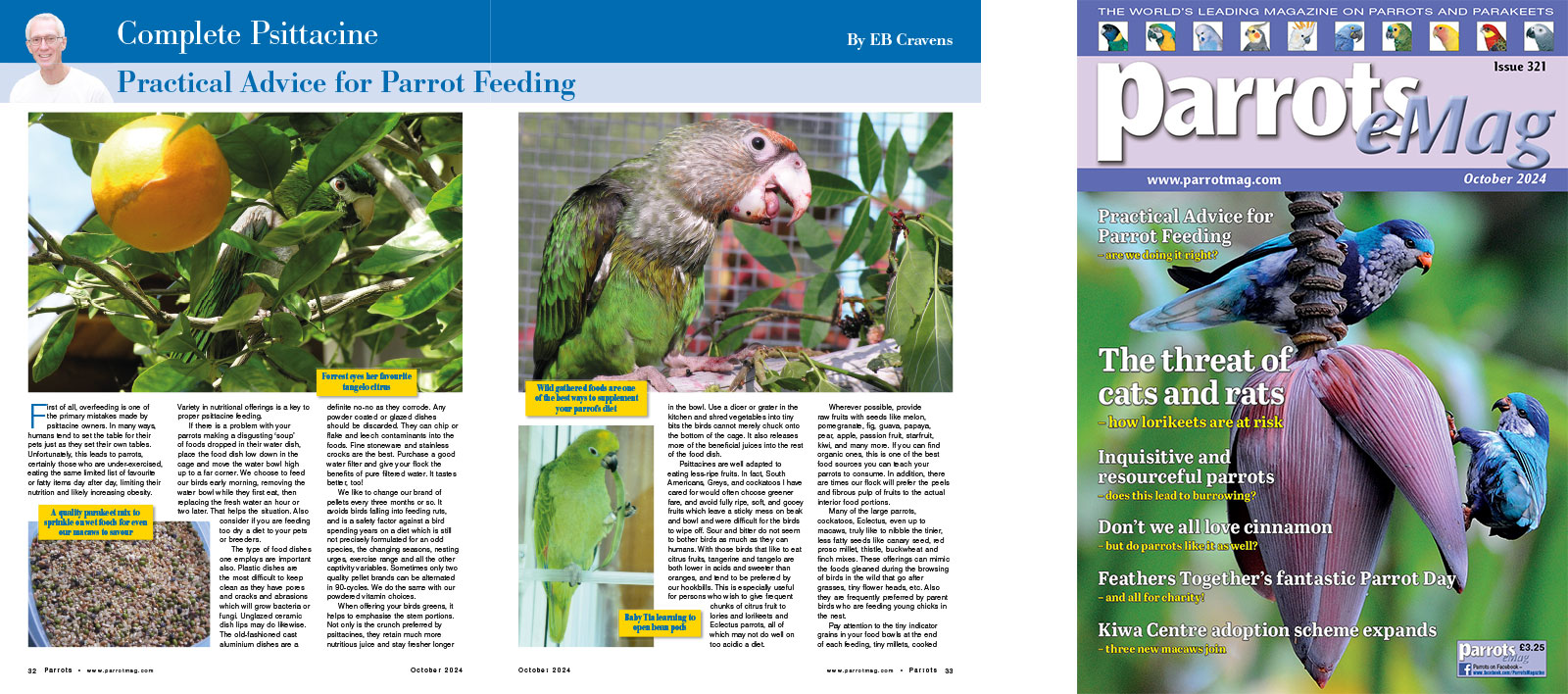
Complete Psittacine by Eb Cravens
First of all, overfeeding is one of the primary mistakes made by psittacine owners. In many ways, humans tend to set the table for their pets just as they set their own tables. Unfortunately, this leads to parrots, certainly those who are under-exercised, eating the same limited list of favourite or fatty items day after day, limiting their nutrition and likely increasing obesity. Variety in nutritional offerings is a key to proper psittacine feeding.
If there is a problem with your parrots making a disgusting ‘soup’ of foods dropped in their water dish, place the food dish low down in the cage and move the water bowl high up to a far corner. We choose to feed our birds early morning, removing the water bowl while they first eat, then replacing the fresh water an hour or two later. That helps the situation. Also consider if you are feeding too dry a diet to your pets or breeders.
The type of food dishes one employs are important also. Plastic dishes are the most difficult to keep clean as they have pores and cracks and abrasions which will grow bacteria or fungi. Unglazed ceramic dish lips may do likewise. The old-fashioned cast aluminium dishes are a definite no-no as they corrode. Any powder coated or glazed dishes should be discarded. They can chip or flake and leech contaminants into the foods. Fine stoneware and stainless crocks are the best. Purchase a good water filter and give your flock the benefits of pure filtered water. It tastes better, too!
